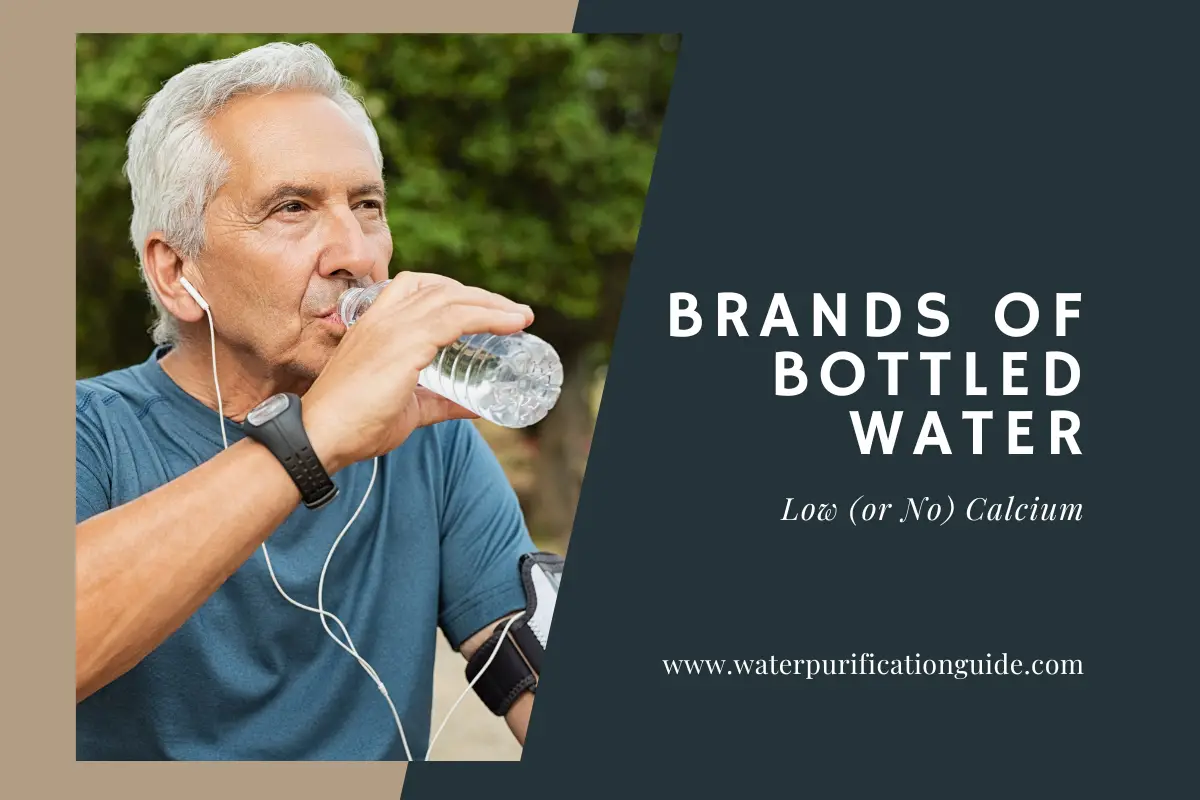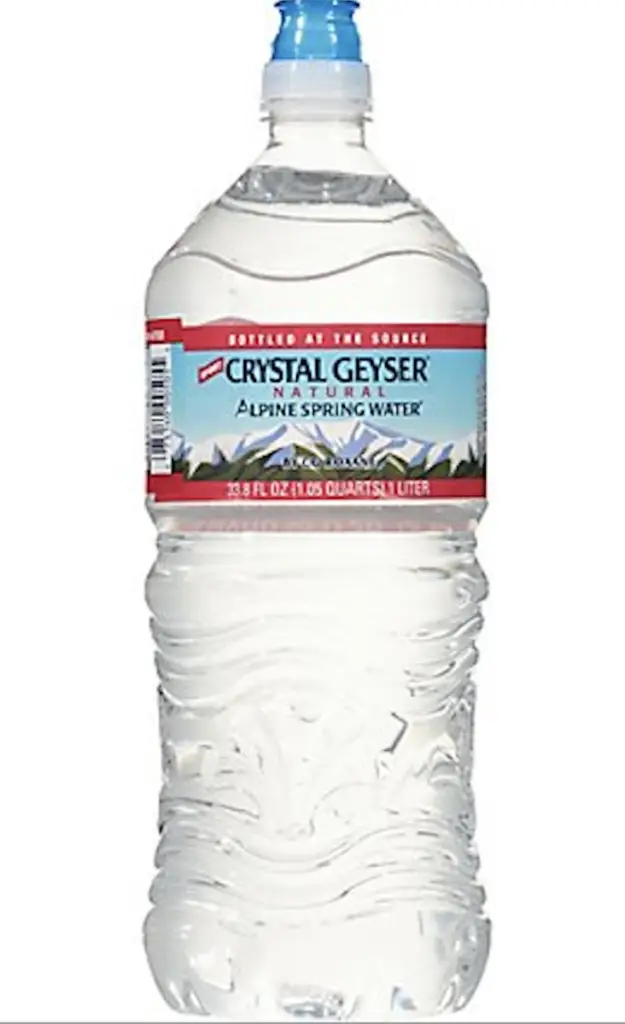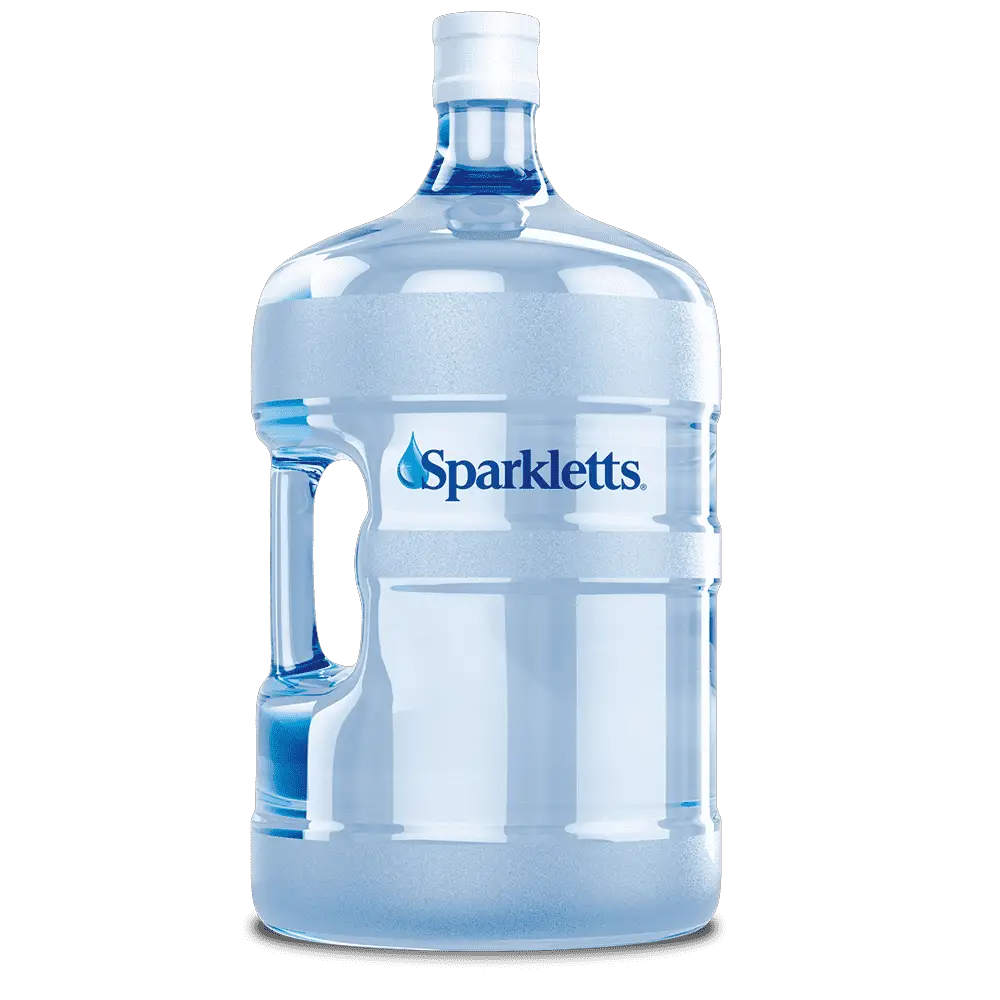Calcium is a healthy mineral, but people with conditions like hypercalcemia need to restrict their daily intake. Because it is so common in popular foods like dairy, beans, lentils, salmon, almonds, and seeds, you cannot afford to consume much calcium in your six to eight glasses of daily water.
If you need to restrict your daily calcium intake, read on to discover how you can stay perfectly hydrated with some calcium-free or low-calcium water brands. Later, we’ll also cover why some people need to drink low calcium water, the calcium RDI for those with Hypercalccemia, types of calcium salts found in water, tap water calcium levels, and which types of water are low in calcium. Enjoy!

1. Aquafina
Like most of the entries on the low-calcium list, Aquafina is tap water that has been purified. Owned by Pepsi Cola and bottled in the United States and Canada, it contains precisely zero calcium, as stated by their own quality report as well as verified by a 2006 study.
They use reverse osmosis, carbon filtration, ozonation, and Ultra Violet light to remove impurities and accordingly has a TDS (total dissolved solids) score of 4 mg/l (milligrams per liter, which is how calcium and other dissolved solids are measured).
2. Penta
After Penta Ultra-Purified Water has gone through its 13-step purification process that includes carbon filtration, micron filtration, two-=stage reverse osmosis, ion exchange, ultraviolet light disinfection, and ozonation, it contains zero calcium.
The water is originally rain water that is naturally stored in aquifers below the San Bernardino Mountains, but once it appears in the bottles, it is as purified as water can be.
3. Essentia
Essentia Bottled Water is a purified tap water to which minerals and electrolytes are added in trace amounts afterwards, but the company’s own tests detect calcium below the level of 1 mg/l, so it’s barely present at all.
They use microfiltration and reverse osmosis to purify the water, after which they remove acidic ions to produce a water with a pH of at least 9.5. It is, thus, one of the few alkaline water types with low calcium levels.
4. Alkaline88
Alkaline88 Purified Ionized Water is another example of water with a high alkaline pH score of 8.8 that contains no detectable calcium.
The producer does add some minerals after its chemical-free purification processes, but since these include 88 types of Himalayan pink salt, the amount of each mineral is negligeable, with only sodium showing up in a measurable amount. It is acquired and bottled in the United States.
5. Voss
Both Voss Still and Voss Sparkling water contain only 3 mg/l of calcium.
This is great for people who don’t like the completely flat taste of mineral-free water, but who nevertheless need to steer clear of calcium. Eight glasses per day, or six milligrams per day, barely dents your daily calcium allowance of 700 or fewer milligrams.
A Norwegian brand in available in either glass or fully recyclable plastic bottles, this water originates from aquifer’s and is then purified.
6. Poland
Poland Spring Origin Water contains only 4.2 mg/l of calcium, which is just enough to add taste while adding almost no calcium to your daily intake.
Poland Spring Distilled Water is completely free of calcium and comes in large 1-gallon bottles. All Poland Spring’s water comes from springs in Maine
The company’s Spring and Sparkling versions are also relatively low in calcium, the former 3.7-12 and the latter 2.9-9.6 mg/l. Just remember that, if you buy a batch with 12 mg/l, you may consume 24 mg of your daily calcium allowance in water alone.
7. Core Hydration
Core Hydration Nutrient-Enhanced Water is right at the top of Amazon’s most popular sports drinks. It holds 5 mg/l of calcium and has a mildly alkaline pH of 7.4, which matches the human body’s natural pH score.
It is purified water to which a few minerals and electrolytes are added after the purification process, and it also comes in an organic version with the same calcium content.
8. Icelandic Glacial
Icelandic Glacial Natural Spring alkaline water has a calcium content of 5.1 mg/l and a high alkaline pH of 8.4. The water is obtained from the Olfus spring in Iceland where it is bottled too.
Unlike most other springs, this spring is naturally low in minerals, which is why its calcium score is so low. It is bottled in both glass and plastic in many different sizes.
9. Crystal Geyser

Crystal Geyser Alpine Spring Water contains some minerals, including 6.0-6.4 mg/l of calcium, but definitely no nasty substances like cyanide, cadmium, arsenic, mercury, or lead.
The water is acquired from a variety of springs in the middle of protected forests throughout the United States, including in New York, New Hampshire, South Carolina, Tennessee, Arkansas, and California. It is bottled at the water source.
10. Nestle Pure Life
Nestle Pure Life Purified Water is such a common brand of purified water that it needs a place here, but the calcium content varies between 4.2 and 10 mg/l, depending on which batch you buy.
The 4.2 mg/l batches are ideal, and the 10 mg/l batches are probably not quite high enough to take up an unacceptably high portion of your daily calcium intake. It is, however, at the upper limit, as eight glasses of water may supply 20 mg of calcium per day.
11. Dasani
Like Nestle’s Pure Life, the calcium content of Dasani Purified Water varies by batch, with academics having tested them all below 10 mg/l in 2006.
Owned by Coca-Cola and acquired from tap water all over the United States, this water is enhanced with some minerals to give it some taste, and its packaging is made of 30 percent plant materials.
12. Arrowhead
Arrowhead Distilled Water is calcium-free, but its Spring Sparkling water contains a sky-high amount. So, make sure you buy the right one.
Like the Zephyrhills brand, this one also comes in handy 1-gallon plastic jugs and it is also completely mineral-free because of the distillation process.
13. Sparkletts

Sparkletts Purified Water has been tested by independent research scientists and found to contain no calcium, even though the company does add trace amounts to the water.
The water is stored in aquifer’s from where the producers obtain it via drilling boreholes.
The company delivers large 3- and 5-gallon bottles and 24-packs of smaller bottles in Arizona, California, Nevada, Oklahoma, and Texas. It is also available at Albertsons, Safeway, Home Depot, and many other common retailers.
14. Zephyrhills
Zephyrhills Distilled Water is a Nestlé brand that contains no calcium, but only if you buy the distilled version. The Zephyrhills spring and sparkling variants are high in calcium.
Some of the water originates from taps and the rest from wells drilled into aquifers, but since the end product is basically water vapor, minerals and metals are completely absent.
It is not always available on Amazon, but you can buy packs of five one-gallon bottles or smaller at many online retailers like ReadyRefresh.
Who Needs to Drink Low-Calcium Water?
Firstly, children below the age of four who love dairy products, as the daily recommended calcium for these kids is only 700 mg.
Secondly, osteoporosis sufferers who have been prescribed bisphosphonates should never consume calcium within an hour of their medication, as calcium prevents their bodies from absorbing these drugs.
Thirdly, people with hypercalcemia, a condition characterized by high calcium in their blood, should reduce their daily calcium intake.
Hypercalcemia is common in people who have overactive parathyroid glands (20 percent of hypercalcemia cases), who have cancer (44 percent of cases), who consume too much vitamin D, who have been physically inactive for a long time, who use antacids and other drugs that contain a lot of calcium, and who drink too little water.
Hypercalcemia can cause:
- depression
- Confusion
- Fatigue
- Muscle weakness
- Digestive problems
- Osteoporosis
- Kidney stones
- Kidney failure
- Irregular heartbeat
Hypercalcemia is also symptom-free in approximately 74 percent of cases until it is very serious.
Recommended Daily Calcium Intake for People with Hypercalcemia?
Because a low-calcium diet alone is not an effective treatment for hypercalcemia, and because the U.S. National Library of Medicine recommends it for only short periods when calcium levels get out of hand or after being discharged from hospital, researchers have not made a definite recommendation for daily calcium intake.
Since the recommended intake for 97-98 percent of healthy adults is between 1,000 and 1,200 mg per day, and since the intake that meets the requirements of 50 percent of healthy adults is 800 mg per day, you’re probably looking at less than this.
Keep in mind that 700 mg can be obtained by drinking two glasses of water per day, which is why it is important to ensure that your water does not contain high amounts of calcium as well.
What Types of Calcium Salt Appear in Water?
Calcium ions (Ca2 or Ca2+), calcium carbonate (CaCO3), calcium hydroxide (CaOH or CaOH+), and calcium sulfate (CaSO4). The specific salt type that appears depends on the rock through which the water flows. For example, calcium hydroxide originates from lime and calcium sulfate from gypsum and anhydrite.
All these salts are all either dissolvable in water or in your digestive acids, so they all have the same effects once they enter your body.
Is Tap Water High in Calcium?
In almost all of the United States, tap water is too high in calcium for people who need to follow a low-calcium regime. For example, drinking six glasses of tap water per day in almost all American cities can supply between 25 and 60 percent of the daily calcium recommended for healthy adults, which is way too much for people who need to minimize their intake of this mineral.
The state of New York is one known exception where tap water contains very little calcium, plus other isolated cities like San Francisco in California, and Durham, Memphis, and Montgomery in the south.
The calcium is sky-high in the water of cities like Indianapolis, San Antonio, Las Vegas, Phoenix, San Diego, San Jose, Tacoma, Jacksonville, and Miami.
In Canada, the water also contains quite a lot of calcium. Here the exceptions are Halifax and Vancouver where the water contains almost none, and at the other extreme are Waterloo and Kitchener where it’s very high.
What Type of Water is Lowest in Calcium?
Tap or aquifer water that has been purified and bottled is the lowest in all minerals, as the purification processes involve the removal of total dissolved solids that include minerals. To be labelled as purified, the FDA (Food and Drug Administration) requires TDS to be no higher than 10 mg/l, which most probably means that very little calcium remains. But there are some serious caveats.
Firstly, the FDA doesn’t test the water, so the companies can put anything on the labels and no one without a scientific laboratory will know.
Further, some companies do add calcium to the water afterwards and simply mention on the label that minerals or electrolytes have been added. Since calcium is one of the most common minerals/electrolytes added to water, it’s safer to exclude these from your list.
Glacier and iceberg water also tend to be low in calcium, as they don’t flow through rocks from which they collect minerals.
Spring water brands differ with regard to the amount of calcium they contain, while mineral water typically holds the most.
Conclusion
The consumer lobby group Consumer Reports estimate that only 18 percent of bottled water brands make their quality reports public, meaning that there might be many calcium-free brands that aren’t on this list. But you can feel confident that these ones are safe.













